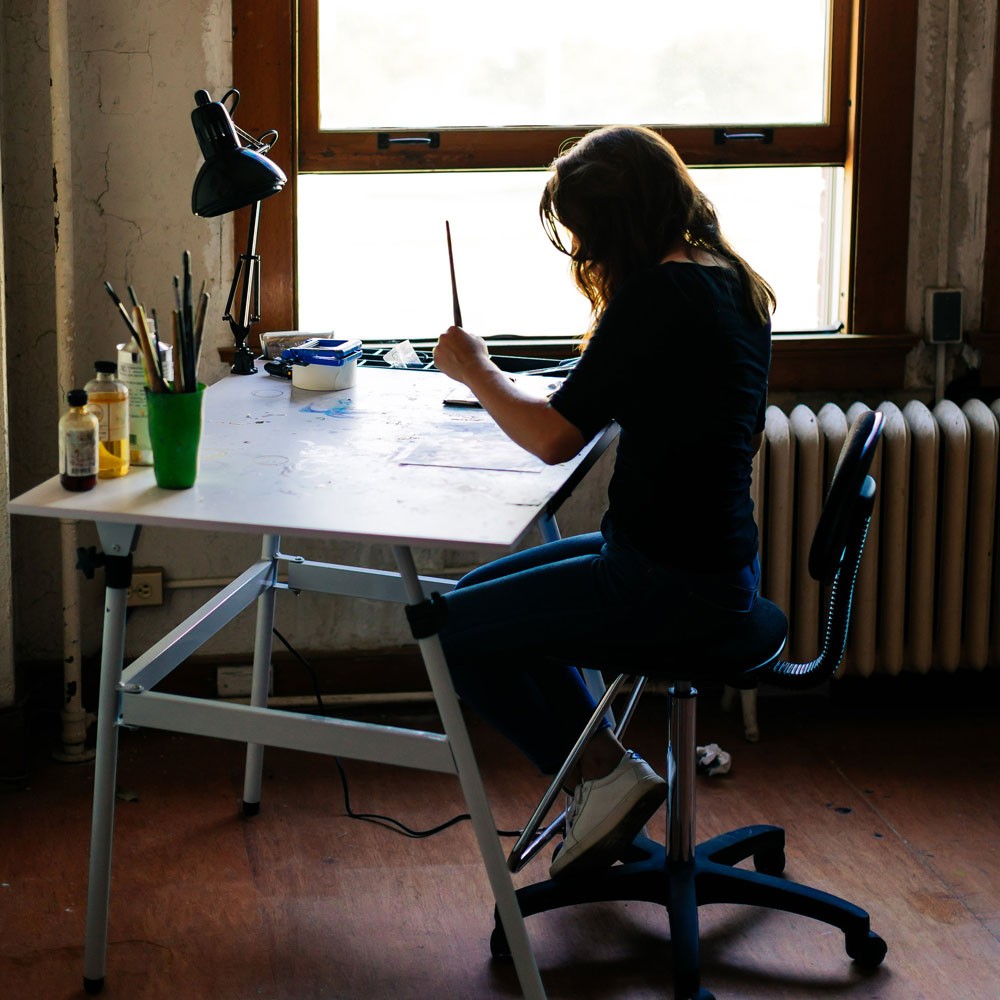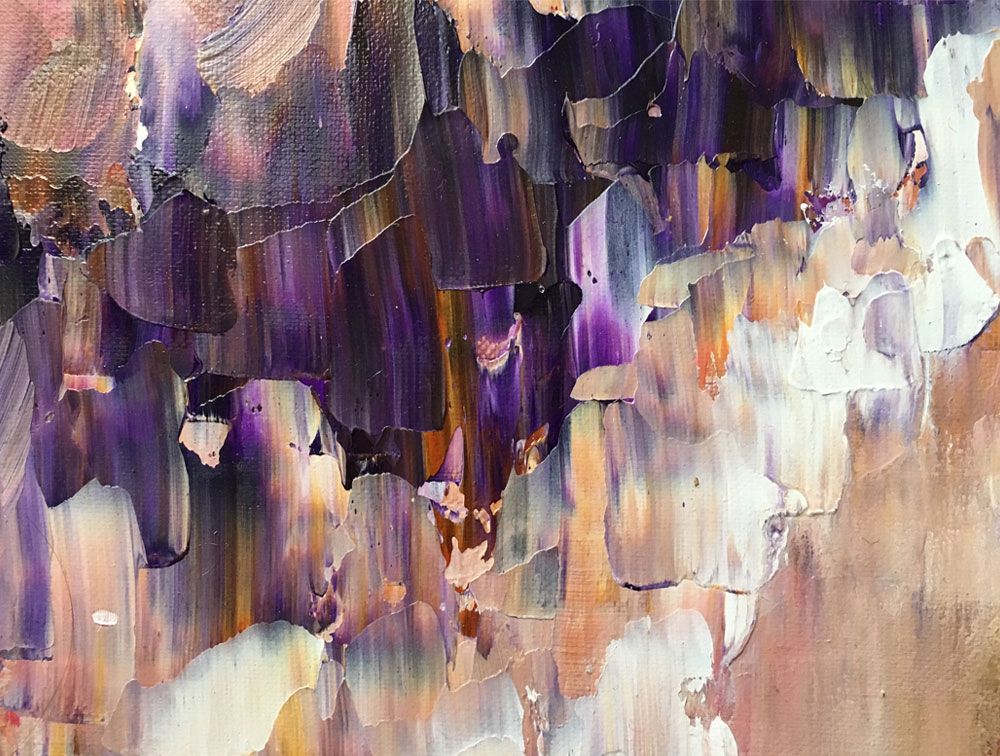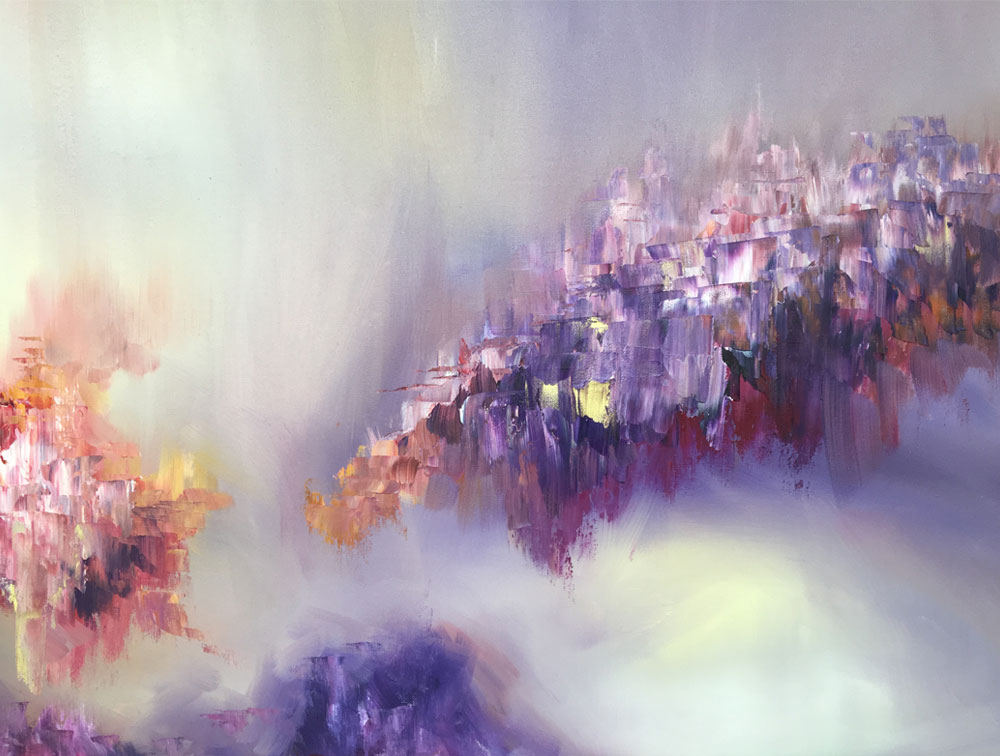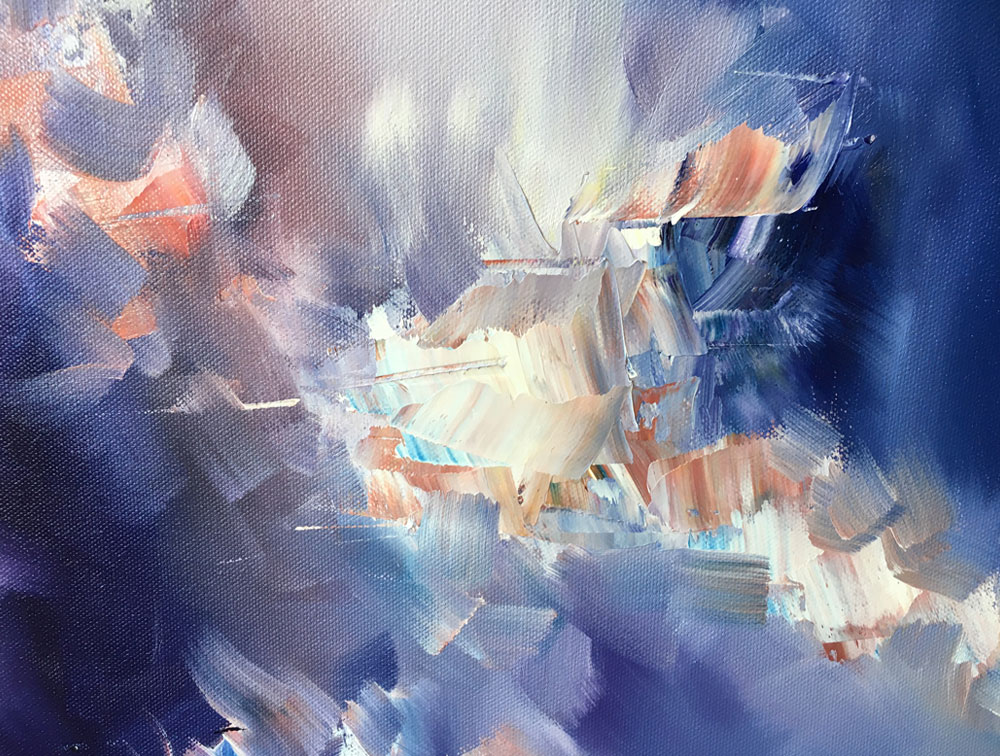Shades of Sound:
The Art of Melissa McCracken
Melissa McCracken was twelve years old when she discovered that the way she experiences the world is different from most people. As a synesthete, McCracken has the amazing ability to visualize sounds, letters, and numbers in an array of colors—a gift that lends itself to incredibly dynamic and moving oil paintings.
What was it like growing up with synesthesia, and what exactly does it mean to be born with this ability?
It's such a funny thing because I never really knew I was different. For so long I thought it was a normal occurrence—like the concept of entering a coffee shop and smelling the coffee; you just assume everyone can smell it. The color portion of my brain is arbitrarily triggered when I listen to music, or see letters and numbers. It's the same sort of color stimulation as if someone tells you to think of the color blue. Seeing the letter A or the number 4 essentially tells me to think of blue.

When did you first discover that not everyone experiences the world the same way as you?
I was twelve, and I asked my brother what his color was for the letter C. He brushed me off, saying, "Oh yeah, my letter C is yellow, too." I never really thought much of it after that. But when I was sixteen, I was choosing a ringtone and trying to match it to the color of my phone. When I explained my predicament to a friend, he had no idea what I was talking about.
It's interesting how natural I assumed it was. Visuals are so often associated with music that I didn't second-guess it. Take music videos and light shows, for example. When I see color, it’s contained in a filter. It's not a hallucination, so it doesn't interfere with my visual field. Similar to how memory works—you can visualize it and you can see it, but it doesn't come into your visual line of sight.

What is most challenging about having synesthesia? Did it ever hinder you from relating to experiences the same way as other kids your age?
It was very normal—so normal that I didn't even think about it. If anything, I think it might have benefited me. In math, it helped with formulas, as I would remember by color-coding things that I had to know for a test. If I was missing green, I would think, "Maybe that's a three that I'm missing," because I would see the pattern of colors in my head and would be able to apply it.
I saw you went to school for psychology before you decided to pursue art. Does your interest in the mind stem from a desire to know more about your own experiences?
My three favorite things growing up were psychology, art, and music, and so they all converged at one point in my career. Psychology is one of those sciences that allows you to do work that has a personal and communicative aspect to it, which is an art form in itself. It's something that I'm thinking about going back to school for because I really enjoyed it.

Even though you didn’t pursue an art degree, did you always know it was something you would continue coming back to throughout your life?
That was the way I looked at it. When I was little, if I got grounded it was always from arts and crafts. Whenever there was a project in school I was always the one who wanted to do the visual side of it. Art was very much embedded in who I was.
I did want to go to art school, but then I kind of had a freak-out moment when I told myself it was impractical. It was always something that felt so natural, though, and made it easy to eventually shift into a career as an artist.
What is your process like for starting a new piece? Do you listen to a particular song or have a pattern or colors in mind before you start?
I've always loved music, but I was never very talented at it. When I listened to a song that was really inspiring, I wanted to have my own interpretation of it. Sometimes I'll listen to a song and be able to paint it immediately, and sometimes I'll have to mull it over and find all of the details in it. In every aspect of my life I've never been much of a planner, so to listen to a song and say, "OK, these are the colors, and this is the idea" doesn't work. I have to just go for it. This results in a lot of throwaways. I keep working outward, applying layer on top of layer.

Does each piece that you produce correlate to a particular song? Do you sometimes listen to more than one song for one piece?
Usually, I stick to one song. One time I did a Bon Iver album called For Emma, Forever Ago. The only reason I chose to do the full album was because it's very, very cohesive. It flows so nicely and encompasses everything. Most often, though, I'll choose sections of songs because they change so much that I can only cover so much ground.
Would you be able to create your work without having synesthesia? Would you still have pursued art as a career?
I always felt like art was so much of me. I would create small art pieces that I thought looked cool, but they weren’t anything I ever planned on selling. I loved looking at art for the technical side of it, but it wasn’t until I was using it as a form of communication that I got into my work so much more. I felt I had to get this part of me across to other people, and synesthesia helped me channel that.
For more info, visit melissasmccracken.com
Up Next:
Plants on the Menu
Your friends and family have to see Melissa McCracken’s art to believe it—share on social media so they can enjoy it, too!

Posted in Feature, March 2018 on Jan 04, 2018